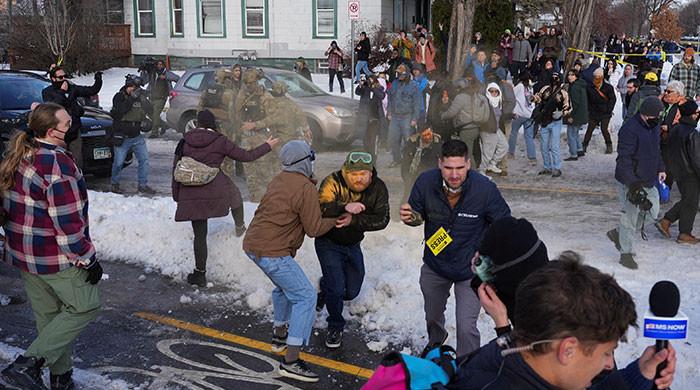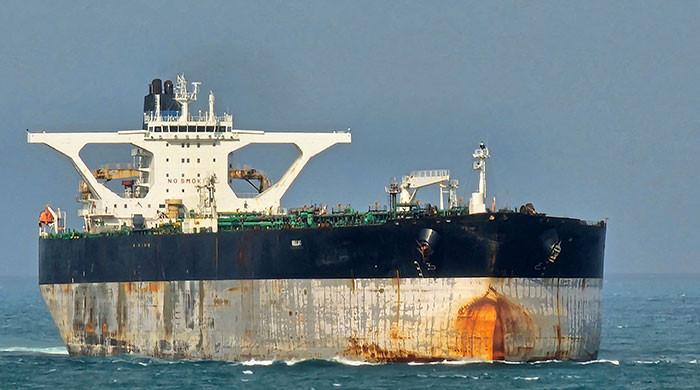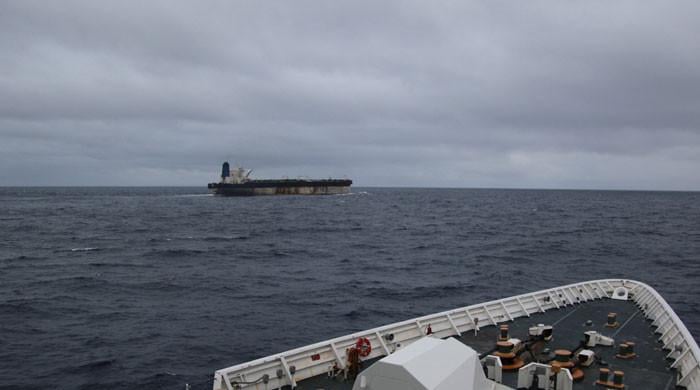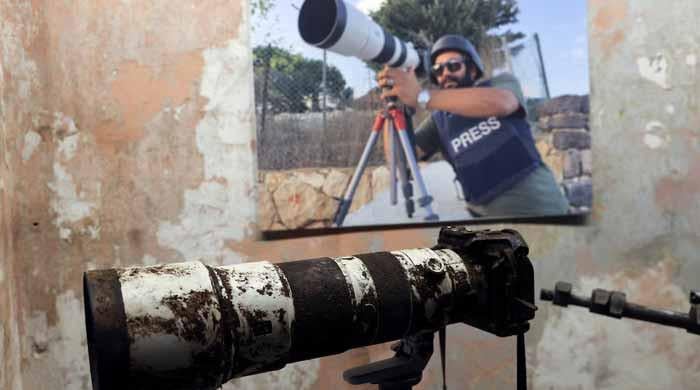Hurricane Maria bears down on St. Croix, Puerto Rico after trashing Dominica
Some roofs had been ripped off, roads were blocked by fallen trees
September 20, 2017
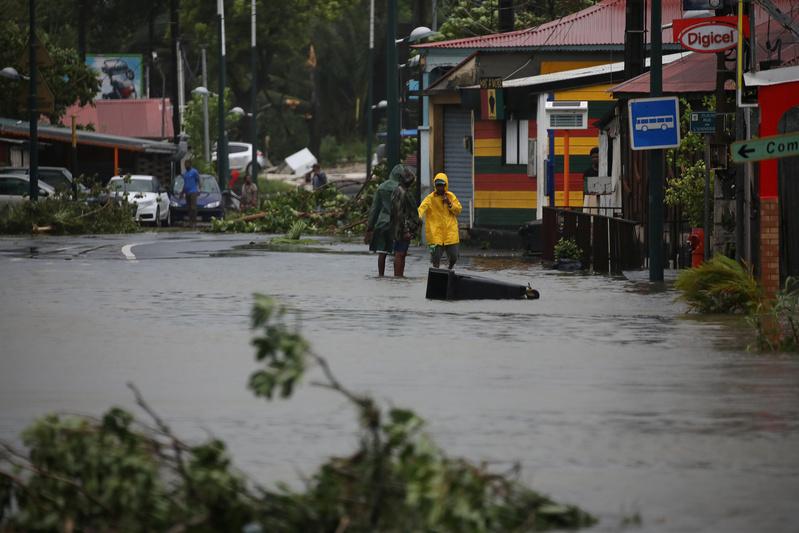
Hurricane Maria, the second maximum-strength storm to hit the Caribbean this month, killed at least one person in Guadeloupe and bore down menacingly on the Virgin Islands and Puerto Rico on Tuesday after devastating the tiny island nation of Dominica.
Maria, a rare Category 5 storm at the top end of the five-step Saffir-Simpson scale, churned in the eastern Caribbean about 80 miles (130 km) southeast of St. Croix in the US Virgin Islands, US forecasters said.
Maria was carrying maximum sustained winds of 165 miles per hour (270 km per hour), the US National Hurricane Center (NHC) said. The “potentially catastrophic” storm was expected to pass near or over the US Virgin Islands on Tuesday night and over Puerto Rico on Wednesday.
The storm plowed into Dominica, a mountainous country of 72,000 people, late on Monday causing what Prime Minister Roosevelt Skerrit called “mind-boggling” destruction.
“The winds have swept away the roofs of almost every person I have spoken to or otherwise made contact with,” Skerrit said on Facebook, noting that his own residence had been hit too. He added that his focus was now on rescuing people who might be trapped, and getting medical help for the injured.
North of Dominica, the French overseas territory of Guadeloupe appeared to have been hit hard. The Guadeloupe prefecture said one person was killed by a falling tree and at least two people were missing in a shipwreck.
Some roofs had been ripped off, roads were blocked by fallen trees, 80,000 households were without power and there was flooding in some southern coastal areas, the prefecture said in Twitter posts.
Video footage released by the prefecture showed tree-bending winds whipping ferociously through deserted streets and shaking lamp posts when the storm first hit.
The region was punched just days ago by Hurricane Irma, which ranked as one of the most powerful Atlantic storms on record. Irma devastated several small islands, including Barbuda and the US Virgin Islands of St. Thomas and St. John, and caused heavy damage in Cuba and Florida, killing at least 84 people in the Caribbean and the US mainland.
Maria was expected to remain an extremely dangerous Category 4 or 5 hurricane as it moved near or over the Virgin Islands and Puerto Rico, the NHC said.
It was expected to pass near St. Croix, which is the part of the US Virgin Islands that escaped the brunt of Irma on Sept. 6. St. Croix is home to about 55,000 year-round residents, roughly half of the entire territory’s population.
US Virgin Islands Governor Kenneth Mapp said he expected to see widespread damage on St. Croix, where a storm surge - ocean water pushed inland by the storm - could cause major damage on the low-lying south side.
St. Thomas and St. John, to the north of St. Croix, were not likely to suffer a direct hit, but Mapp said they could be affected by swirling debris left from Irma.
“Two Category 5s in 14 days is a challenge for anyone,” Mapp told Reuters. “We’re going to have a long road to recovery.”
Many US Virgin Islands residents were fleeing to shelters around midday Tuesday. Mapp urged islanders to focus on saving themselves.
“You lose your life the moment you start thinking about how to save a few bucks to stop something from crashing or burning or falling apart,” he said. “The only thing that matters is the safety of your family, and your children, and yourself. The rest of the stuff, forget it.”
US airlines said on Tuesday they would cap one-way fares at $99 to $384 to aid evacuations.
Maria was predicted to be the worst storm to hit St. Croix since Hugo, a Category 4 storm, in 1989.
Hector Cintron, who works at a telephone company on St. Thomas, said he had spent the past couple of days preparing generators, securing his belongings and clearing debris as he and his neighbours prepared for a repeat of Irma.
“There’s a lot of stress and a lot of anxiety. It’s off the charts,” he said. “The community is coming together, and helping people out. That’s the good thing.”
‘TIME TO ACT’
In Puerto Rico, a US territory with about 3.4 million inhabitants, Governor Ricardo Rossello urged residents to go to official shelters, saying, “It’s time to act and look for a safe place if you live in flood-prone areas or in wooden or vulnerable structures.”
Puerto Rico avoided a direct hit from Irma two weeks ago as that storm skirted north, although it still saw damage.
In the neighbourhood of Miramar in Puerto Rico’s capital, San Juan, Gerry Garraton said he was ready for the storm.
“I am prepared. I have water, I have cash, I boarded up my windows, I have gas. That’s it,” said Garraton, smoking a cigarette on the sidewalk near his home.
Garraton, 58, planned to be alone in his apartment in Miramar during the storm, and said he could stay there a few days, if needed.
Shelters in Puerto Rico have capacity for nearly 70,000 people, but Puerto Rico Housing Secretary Fernando Gil said he was concerned that only 299 people had taken refuge in official centers as of Tuesday morning.
Mary Luz, 43, and her daughter Summer Torres Varela, 23, who has epilepsy, went to the medical shelter at Puerto Rico Convention Center in Isla Grande, near old San Juan, on Tuesday. Torres Varela was vacationing in St. Thomas during Irma and experienced three seizures, Luz said.
Maria is the 13th named Atlantic storm of the year, the seventh hurricane so far this season and the fourth major hurricane - defined as Category 3 or higher - following Harvey, Irma and Jose, the NHC said. Those numbers are all above average for a typical season, which runs from June 1 to Nov. 30.





